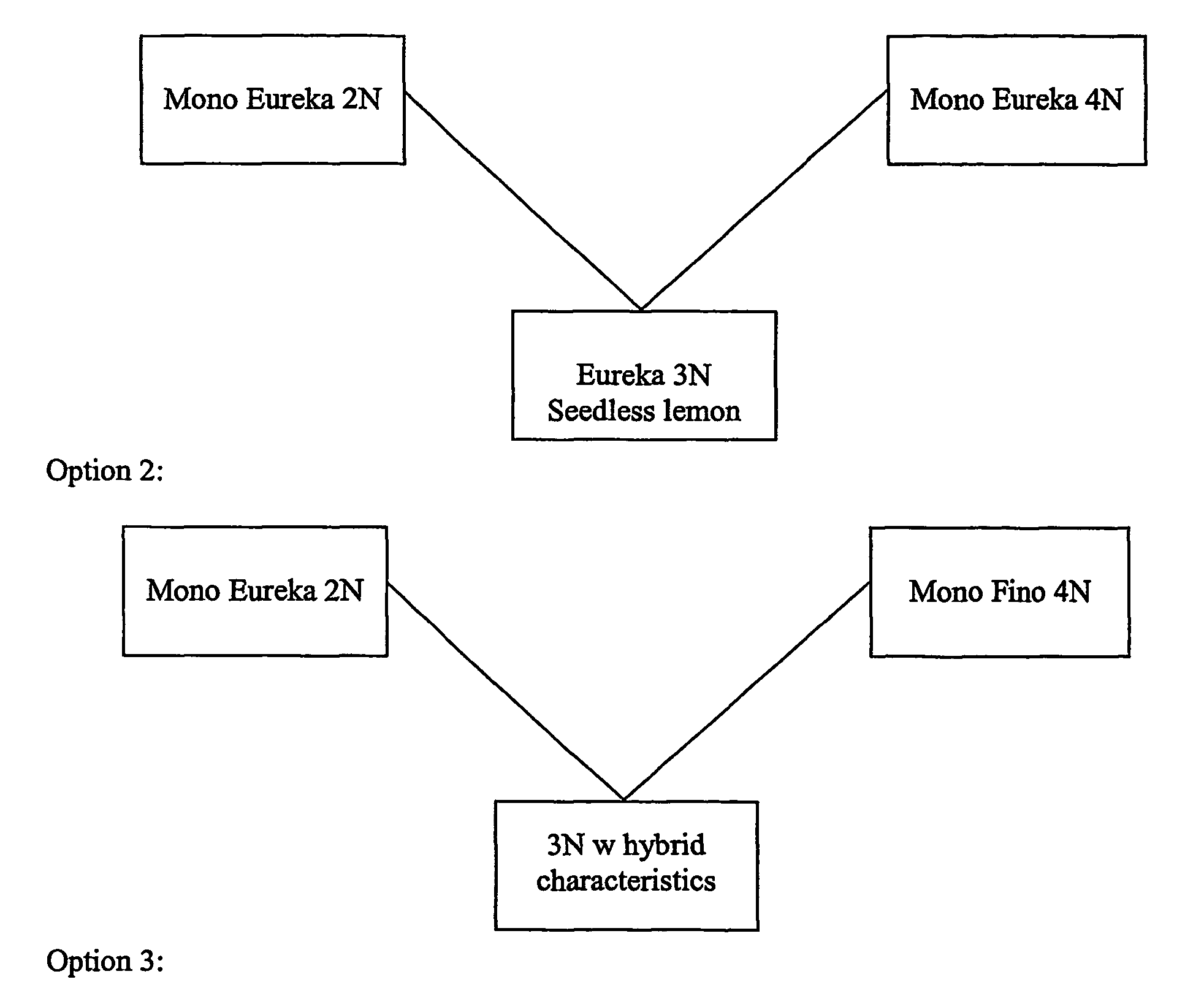Method for Increasing Ploidy in a Plant
- Summary
- Abstract
- Description
- Claims
- Application Information
AI Technical Summary
Benefits of technology
Problems solved by technology
Method used
Image
Examples
example 1
[0059] Firstly, the plants are budded (on a selected root stock), then they are held in a dormant state and the appropriate chill requirement is given in a cool room (if required). The plants are then removed to a warm environment to prime the bud (which is still dormant). This is continued up to the point at which dormancy is “broken”, cell division is commenced. The bud is then wrapped in absorbent substance, the absorbent material is injected with a 1% aqueous solution of the colchicine drug. Note that this is 10× higher concentration than normal treatments. A plastic surround is used to enclose the bud, to keep it moist but exposed to the drug. This treatment is repeated twice daily for five days minimum. The original growing point is generally killed in the process, however, apical side buds are produced adjacent to this killed main bud, which are usually mutated.
[0060] In a next step, to determine whether a ploidy increase has resulted, the stomata on leaves are counted per u...
example 2
Polyploidy—Growing Seedless Citrus
[0062] In general, all types of citrus (for example, grapefruit, lemon, orange, mandarin, etc) are poly-embryonic. Poly-embryonic means that a seed will germinate with multiple shoots, as opposed to normal seeds from other species, which send-up one sexual shoot (mono-embryonic). Only one of these shoots is a sexual shoot.
[0063] Crossing two citrus plants (say “A” and “B”) normally results in a poly-embryonic seed with the same phenotype as one of its parents (say “A”). This may be referred to as clonal to the female parent.
[0064] The poly-embryonic shoots germinate from the nucellar tissue (sometimes called placental tissue) of the seed that surrounds the fertilised embryo. This phenomenon is referred to as apomixis. This is a form of natural cloning and is undesirable in breeding as the nucellar tissue interferes with the developing hybrid embryo. The consequence is that viable hybrid crosses are rarely produced. In approximately 2 out of 10,0...
PUM
| Property | Measurement | Unit |
|---|---|---|
| Time | aaaaa | aaaaa |
| Time | aaaaa | aaaaa |
| Time | aaaaa | aaaaa |
Abstract
Description
Claims
Application Information
 Login to View More
Login to View More - R&D
- Intellectual Property
- Life Sciences
- Materials
- Tech Scout
- Unparalleled Data Quality
- Higher Quality Content
- 60% Fewer Hallucinations
Browse by: Latest US Patents, China's latest patents, Technical Efficacy Thesaurus, Application Domain, Technology Topic, Popular Technical Reports.
© 2025 PatSnap. All rights reserved.Legal|Privacy policy|Modern Slavery Act Transparency Statement|Sitemap|About US| Contact US: help@patsnap.com

